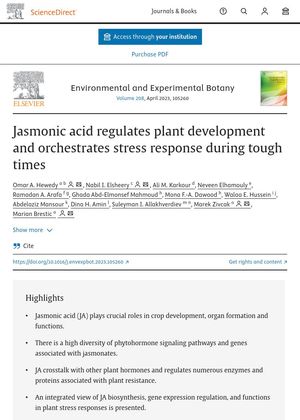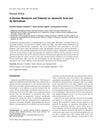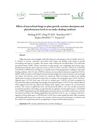Jasmonic Acid Regulates Plant Development and Orchestrates Stress Response During Tough Times
February 2023
in “
Environmental and experimental botany
”
jasmonic acid jasmonoyl isoleucine plant development environmental stressors salt stress drought stress temperature fluctuations heavy metal toxicity resistance mechanisms microorganisms insect outbreaks crop resilience floral development tuberization trichome formation arbuscular mycorrhizal colonization fertility rice spikelets tomato embryo development tuber growth intracellular microtubules radial cell expansion root system development root growth root regeneration flower evolution lateral root construction crosstalk plant hormones exogenous JA anti-stress agent antioxidants JA JA-Ile

TLDR Jasmonic acid helps plants grow, defend against threats, and survive stressful conditions like drought and salt.
The document discusses the role of Jasmonic Acid (JA) and Jasmonoyl isoleucine (JA-Ile) in plant development and defense. These hormones help plants respond to environmental stressors such as salt, drought, temperature fluctuations, and heavy metal toxicity. JA is involved in various cellular and biological processes, including resistance mechanisms against microorganisms and insect outbreaks, and different stages of plant development. It also stimulates other hormones to improve crop resilience. JA concentrations vary based on tissue type, developmental stage, and environmental stimuli. It plays a crucial role in floral development, tuberization in potatoes, trichome formation, and arbuscular mycorrhizal colonization. JA also influences fertility by regulating the development of rice spikelets and tomato embryo development. It has been hypothesized that JA accelerates tuber growth by breaking intracellular microtubules and promoting radial cell expansion. JA also plays a role in plant root system development, impacting root growth, root regeneration, and flower evolution. It encourages lateral root construction and regulates crosstalk with other plant hormones. JA is also involved in plant responses to drought and salt stress, with studies showing increased JA content in response to these conditions. The application of exogenous JA has been shown to enhance drought resistance in several plants and act as an anti-stress agent against salt stress. JA also improves plant tolerance to heavy metal stress by influencing the endogenous level of jasmonate and increasing the activity of antioxidants.

